How about taking a break during your telework with Japanese tea from Oishoen, a purveyor to the Shrines of Japan?
掲載日:2020.06.29
In order to live up to its name as a purveyor to the Jingu Shrine, Oishoen, which protects the passion and traditional taste that has been passed down and continues to take on new challenges, presents a tea set that has been completed in a thorough pursuit of delicious taste as a drink. We would like to introduce you to
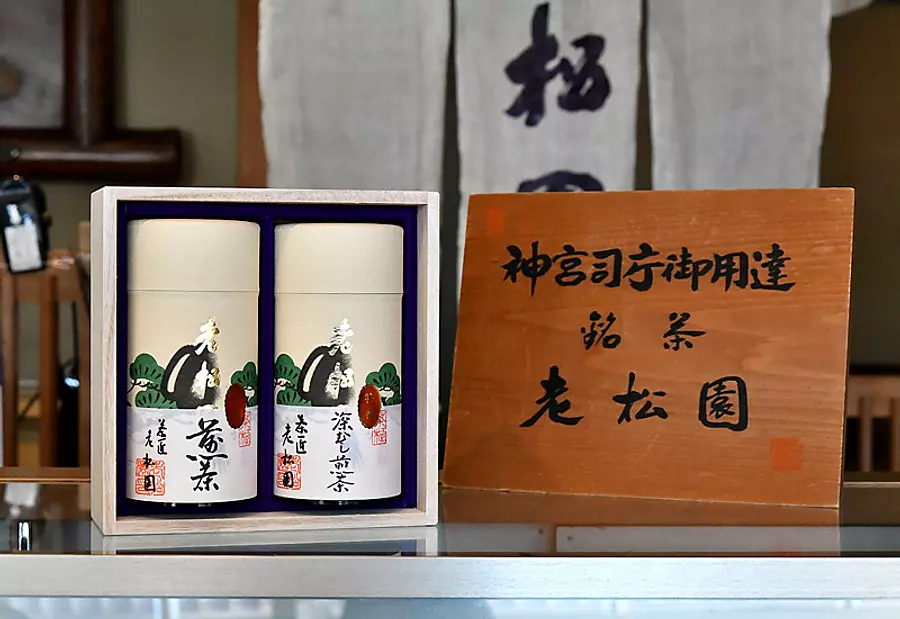
The products we will be introducing this time are tea assortments from the long-established store [Oishoen].
Established in 1899 in Mie Prefecture, which ranks third in the country in terms of tea production.
We would like to introduce you to the history and commitment to tea gifts from Roishoen, a long-established tea company that believes that tea is only a fresh food and has thoroughly pursued the delicious taste of tea leaves.
・120g of special deep bean sencha, 110g of special sencha, 2 cans in wooden box 5,400 yen (tax included)
・120g of specially selected deep bean sencha, 120g of deep bean sencha, 2 cans in paper box 5,400 yen (tax included)
*The photo shows 120g of Tokusen Deep Mushi Sencha, 110g of Tokusen Sencha, and 2 cans in a wooden box.
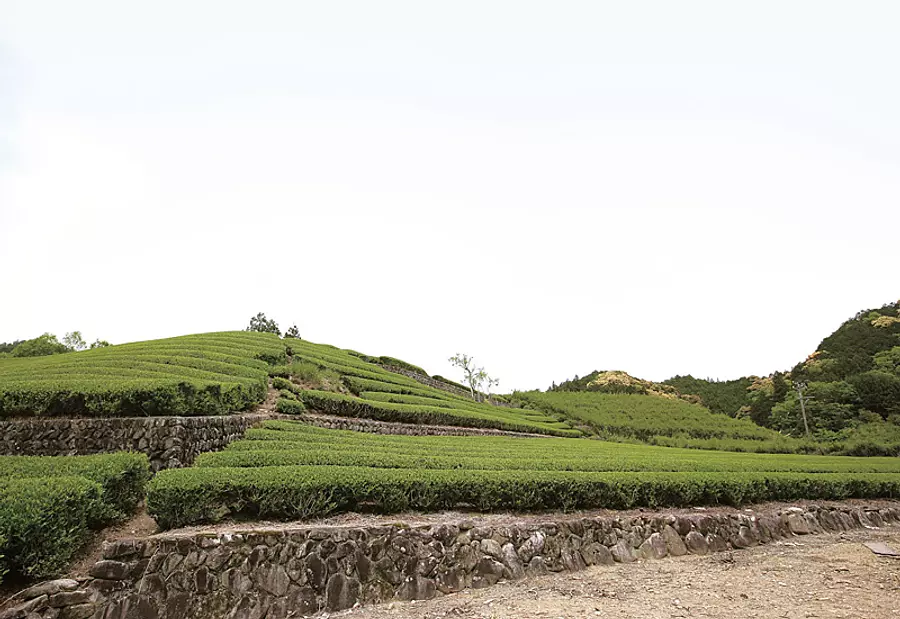
A tea plantation blessed with many blessings from nature, including high-quality soil and clear water.
According to ancient documents, tea production in Mie Prefecture began during the Engi period (901-922) when Genan, the chief priest of Mt. Iimori-Jorinji Temple (currently Ichijoji Temple in YokkaichiCity, suizawacho), developed a tea-making method directly handed down by Kukai. It is said that this tradition began when tea trees were planted in this area.
Mie tea has a history of more than 1,000 years, but compared to tea from other regions, it is said to have a stronger astringency and a slightly yellowish color.
Therefore, in order to produce even better quality tea leaves, the second generation Kentaro Sugimoto decided to work with tea farmers himself to improve the soil of tea plantations by introducing organic fertilizers.
We also minimized the amount of pesticides used, and spared no effort or time to create delicious tea.
In addition, the tea plantations of our contract producers are also the source of the clear Isuzu River, and many draw water from the Miyagawa River, which is recognized as a river with the best water quality, creating an environment conducive to growing delicious tea leaves. I was also blessed.
With such a blessed environment and passion, we were able to successfully produce delicious tea that earned us the name of a purveyor to the Shrine Palace.
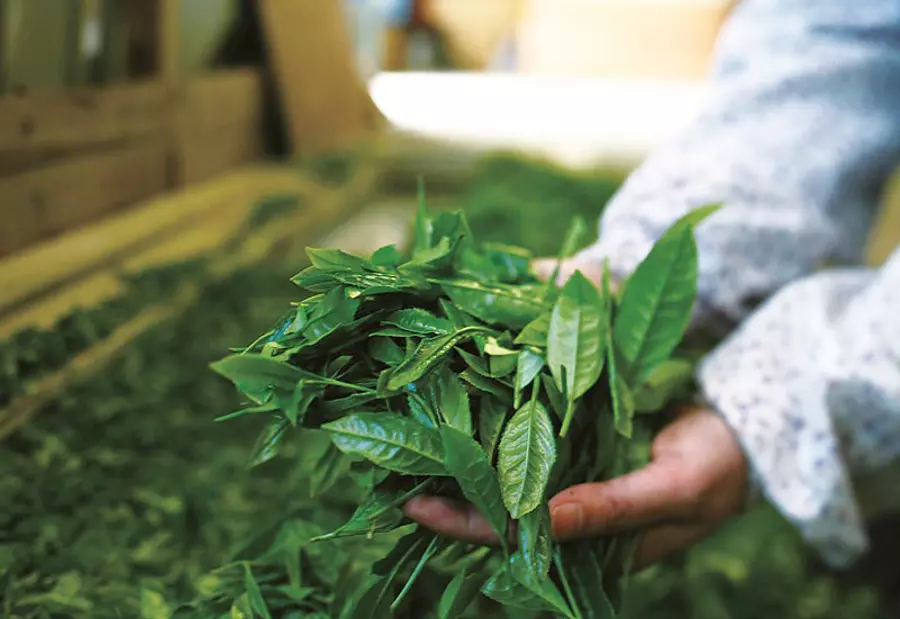
We use only domestically grown, additive-free new tea leaves grown at the beginning of the year throughout the year.
Normally, after the new tea, the second and third teas are picked and used as "bancha", but at "Oishoen", only the newly sprouted tea leaves of the new tea are used for all teas.
Based on the idea that tea is a fresh food, we want people to enjoy the goodness of fresh tea all year round. Our finishing factory is equipped with modern equipment to maintain freshness by cooling and sealing using a special method.
Aged at temperatures below -20°C, it maintains its high aroma while offering a refreshing fresh tea taste throughout the year.
By the way, new tea refers to the 88 nights when summer approaches. Young leaves grow in the fields and mountains...'' But as you know, it is made by picking the first new shoots that grow in early summer, on the 88th day of the first day of spring (the first day).
Fresh tea has soft leaves and contains a lot of water, minerals, and theanine, which is a sweet and umami ingredient, and has a fresh aroma and sweetness.
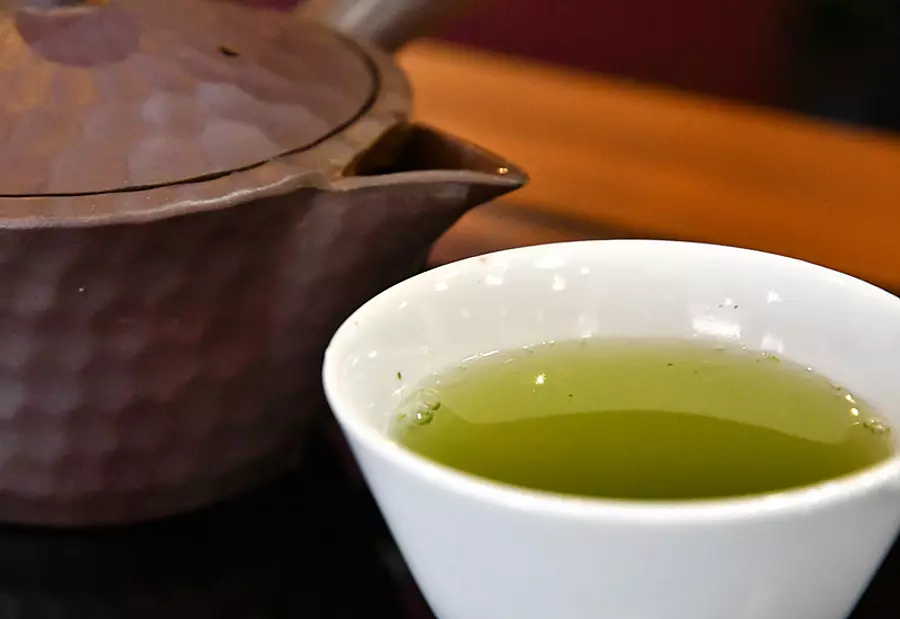
Oishoen's original "ultra deep steaming method"
The tea is made using such high-quality tea leaves, but about 70 years ago, when I tried brewing it with Tokyo water, I couldn't get the usual delicious tea taste.
Some people may have felt that the taste of rice is different from usual when it is heated in a different region or when the water is changed, but the same goes for tea, where the taste changes depending on the water. It will be.
“Then, isn’t it the true taste of tea? ”
``We want people to feel free to drink it on a daily basis, without worrying about the conditions. ”
With this in mind, I researched whether it would be possible to brew delicious and delicious tea using any type of water, and after much trial and error, I arrived at Oishoen's original ``ultra-deep steaming method.'' What is it?
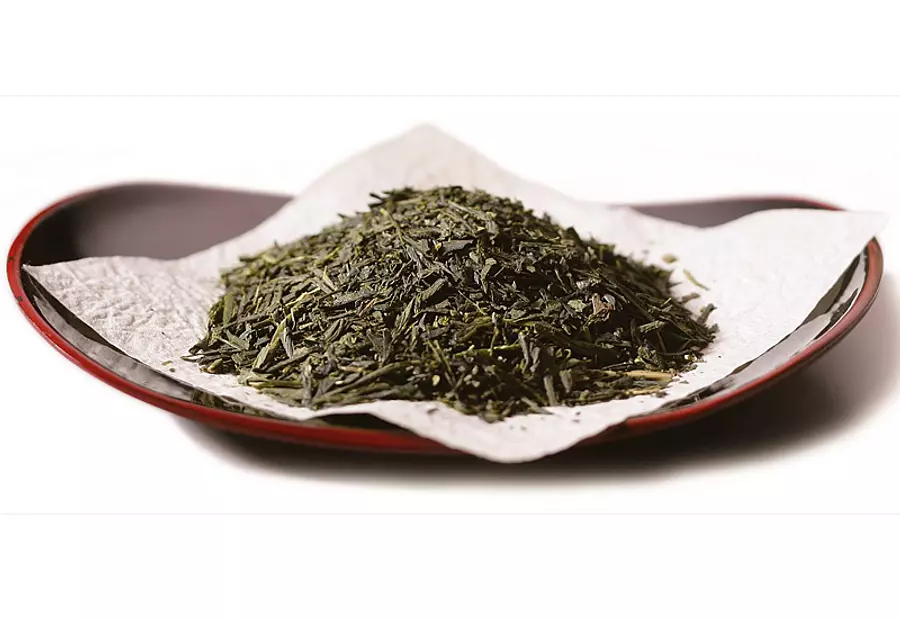
What is the ultra-deep steaming method?
Fermentation of tea leaves begins from the moment they are picked from the tea plantation due to the action of enzymes.
To stop the fermentation, the tea leaves are steamed, and the sencha that everyone is familiar with is made by steaming this process in about 30 to 40 seconds.
In the ``ultra-deep steaming method,'' tea leaves are carefully steamed for twice to three times as long as sencha.
By slowly steaming the tea leaves, the steam heat is transmitted to the inside of the tea leaves, reducing the astringency, bringing out the umami and richness of the tea, and giving it a mellow taste.
Deep steaming causes the tea leaves to become short, crushed, and powdery, making them look bad and not being liked.
However, by steaming for a long time, the cells in the tea leaves are destroyed more than in regular tea, allowing the nutritional components of the tea leaves that are difficult to dissolve into the tea to be included in the tea.
Due to its high nutritional content and deep flavor, it was recognized as ``a deep and delicious tea that is good for the body,'' and it gradually became popular.
As a result of pursuing the taste rather than the appearance, we have created a delicious deep-steamed tea that brings out the unique sweetness and is able to extract many of the nutrients from tea, and is loved by many people.
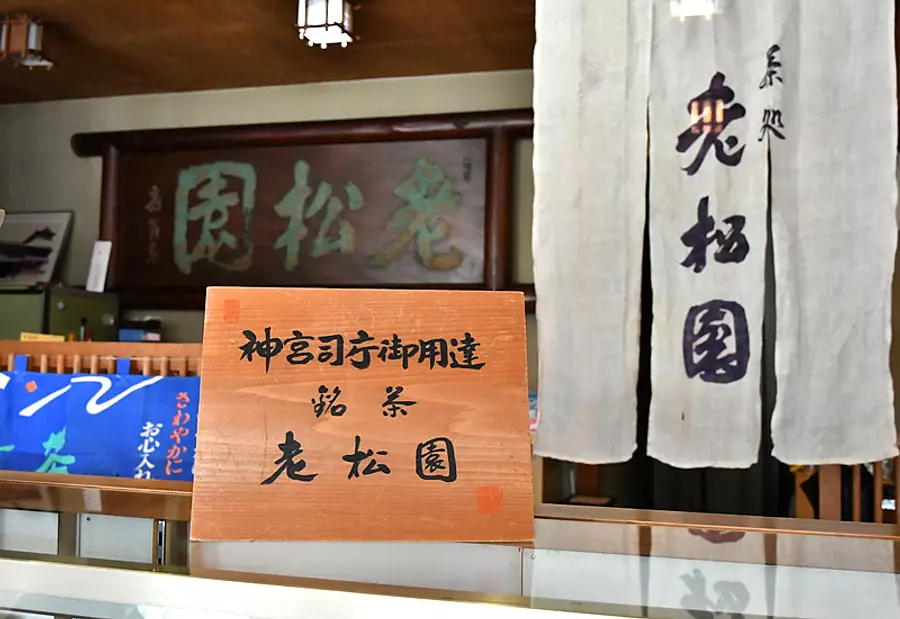
Fine tea that has been awarded the Medal with Yellow Ribbon and is a purveyor to the Jingu Administration Office.
Oishoen's extraordinary efforts, love for tea, and accomplishments as mentioned above were recognized, and it became known for its delicious tea.
In 1971, when Their Majesties the Emperor and Empress visited IseJingu, it was presented to them at the request of the Shrine Administration Office.
Since then, it has been awarded the honor of being a ``Tea purveyor to the Shrine and Shrine Authority''.
Additionally, in 1988, the second generation Kentaro Sugimoto was awarded the Medal with Yellow Ribbon and the Order of the Sacred Treasure, 4th Class.
In order to live up to its name, "Oishoen" performs thorough quality control during the tea manufacturing process, conducting more than twice as many sensory tests as other companies for taste, shape, color, and aroma.
We also ensure safety by conducting double foreign object contamination inspections using metal detectors and visual inspection.
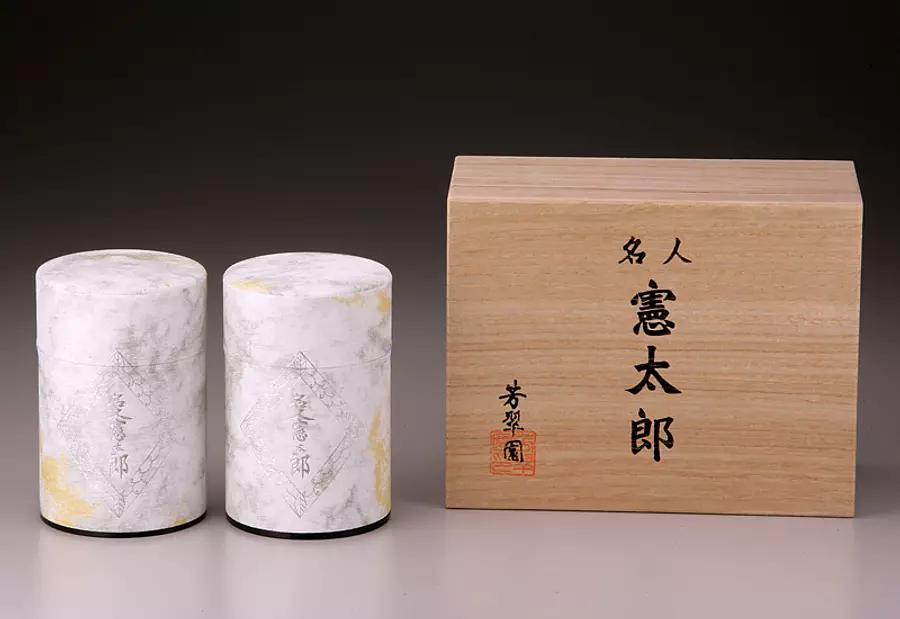
[Meijin Kentaro] was named out of gratitude to the deceased and the thoughts of his fans.
The tea created by Mr. Kentaro with extraordinary passion and love was called ``Master Tea'' by his patrons as tea made by a master.
After Mr. Kentaro's death, at the request of our customers, we named it ``Meijin Kentaro'' in memory of the deceased.
This [Master Kentaro] has been awarded the special award for ``entertainment gifts'' for three consecutive years.
He was inducted into the Hall of Fame in 2020.
*“Entertainment gifts” are sponsored by Gurunavi, and are highly rated after being evaluated over a year by working secretaries who are known as “specialists in selecting gifts” and who select many gifts that convey thoughtfulness for important business occasions. We have selected reliable souvenirs.
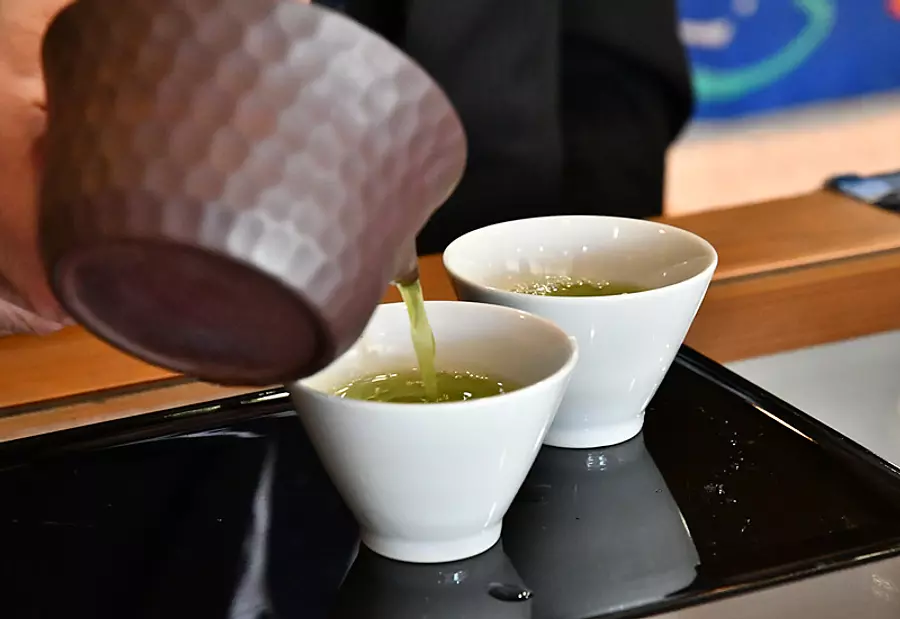
In order not to lose tea culture
"Oishoen" is a long-established store that is known as a purveyor to the Shrine Palace, but they are also working on various new initiatives to make tea culture more familiar.
One of these was the ``Collaboration of Fresh Tea and Kaiseki Cuisine'' held at the Westin Hotel Tokyo.
There are many types of tea, each with their own characteristics.
In this event, while listening to stories about the characteristics of various teas, you can enjoy the marriage of Japanese tea and kaiseki cuisine that is often heard with wine and beer.
In the past, I used to hold seminars on how to make delicious tea, but at those times only tea lovers gathered, so there was a time when I was worried because it didn't lead to my desire to spread tea culture. that's right.
From there, we reversed our thinking and held an event with the idea of ``Let's get people to experience delicious tea first.'' By doing so, we got people interested in tea and asked, ``How can we make delicious tea?'' It seems that this is now possible.
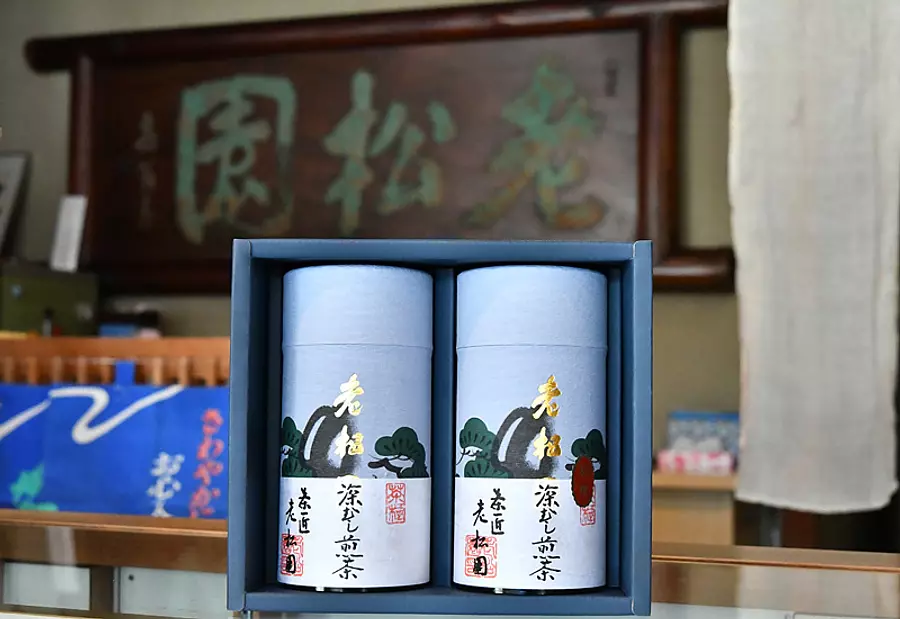
All can be brewed
As the summer gets hotter, there's no need to worry if you don't want hot tea.
All of the teas produced by Oishoen, which has passed down a deep love and passion for tea from generation to generation, can also be brewed cold, including the ones we introduced this time.
It is surprising that you can make cold brew not only for Sencha but also for Hojicha.
Moreover, by slowly brewing tea with cold water, a large amount of ``epicadocatechin'', a component that is only found in green tea among all foods, is extracted.
This "epicadocatechin" has a high antiviral effect and helps boost immunity.
It is also effective in preventing heat stroke, so why not drink tea every day to easily manage your health as the summer heats up?
*The photo shows 120g of special selection of deep-fried green tea, 120g of deep-fried green tea, and 2 cans in a paper box.
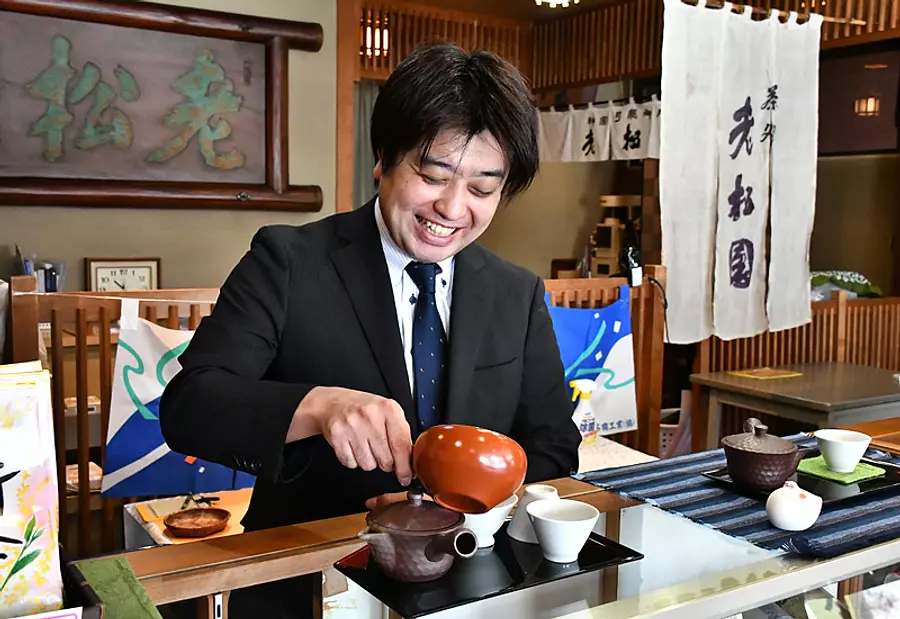
Bring out the charm of tea with Western sweets
In an effort to spread awareness about the deliciousness of tea, we are collaborating with Western confectionery shops and other stores through our sales company Hosuien in Tokyo.
For example, have a drink and pancakes at [512 Cafe&Grill] in Roppongi Midtown.
Also, matcha cookies at Ginza West.
We are expanding the ways to enjoy tea, not only by drinking it but also by eating it.
Hojicha cookies will also be on sale for a limited time at Ginza West from June 20th.
In addition, Western tea sweets made in collaboration with an Italian restaurant were exhibited at an expo in Milan and used at IseShimaSummit.
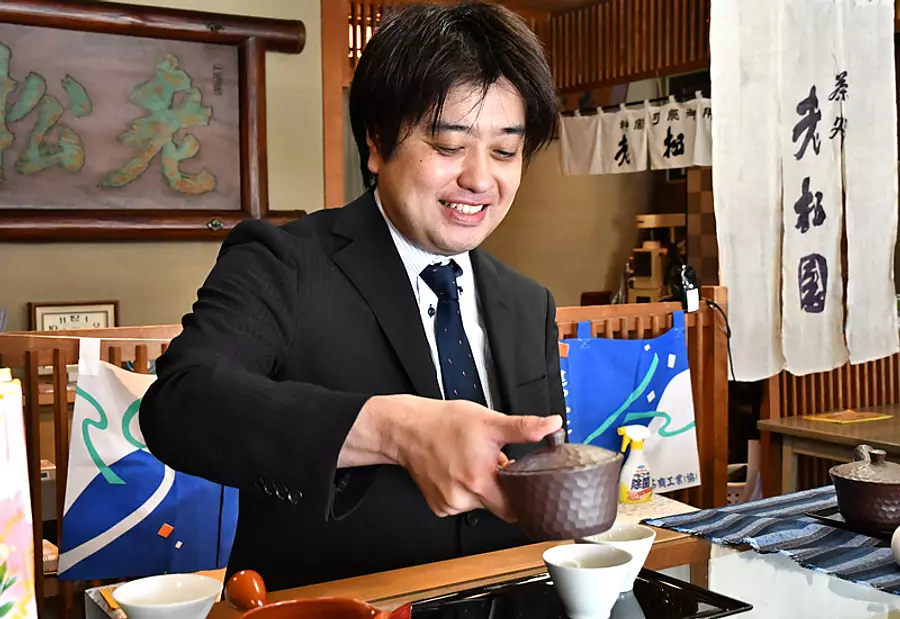
``In order to brew delicious tea, there are many things to keep in mind, such as the amount of tea leaves and the temperature of hot water, but first of all, we want you to enjoy tea casually without worrying about etiquette,'' says Yota Sugimoto, the fourth generation president of the company. .
``I would like more people to know about the tea of ``Oishoen,'' which was created by our predecessors who continued to focus on making delicious tea.
As the 4th generation owner, I believe that my mission is not only to continue making delicious tea, but also to spread the appeal of tea in order to pass on tea as part of Japanese culture to future generations.
My immediate goal is to collaborate with local companies in Matsusaka to develop products and events that will help people enjoy tea. ”
President Sugimoto talks about his passion for tea.
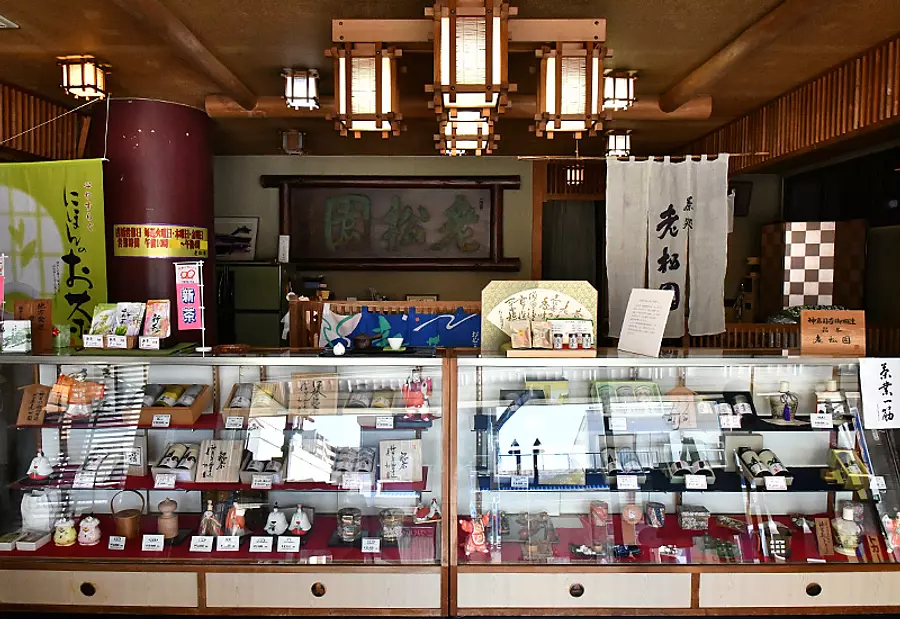
There are also stylish tea canisters that are perfect as gifts.
Why not try out the tea from [Oishoen], which preserves the passion and traditional taste that has been passed down, and continues to take on new challenges.
Tea canisters come in a variety of shapes, and I think they would be a great gift for someone special, such as a mid-year gift or a year-end gift.
[Oishoen basic information]
≪Head office≫
158-1 Nagazukicho, MatsusakaCity Mie Prefecture TEL: 0598-21-0047 (Main)
≪Sales store≫
751 Hinocho, MatsusakaCity City, Mie Prefecture
TEL:0598-21-0810(代)
Business days: Tuesdays, Thursdays, and Fridays from 10:30 to 16:30 (Delivery orders can be placed by phone Monday to Saturday)
≪Sales Division≫
Hosuien Co., Ltd. 3-10-13-103 Osaki, Shinagawa-ku, Tokyo 141-0032
TEL: 03-5719-3477 (Main) FAX: 03-5719-3522 (Main)
Online shop http://www.tea.co.jp/
≪Other stores≫
Famous department stores in Tokyo (Tokyu, Odakyu, Matsuya, Tamagawa Takashimaya, etc.)
Luxury supermarkets such as Meijiya, Seijo Ishii, Odakyu OX, and Tokyu Presse
Westin Hotel Gajoen
*Information as of June 2020.
| Category | |
|---|---|
| season | |
| area |



